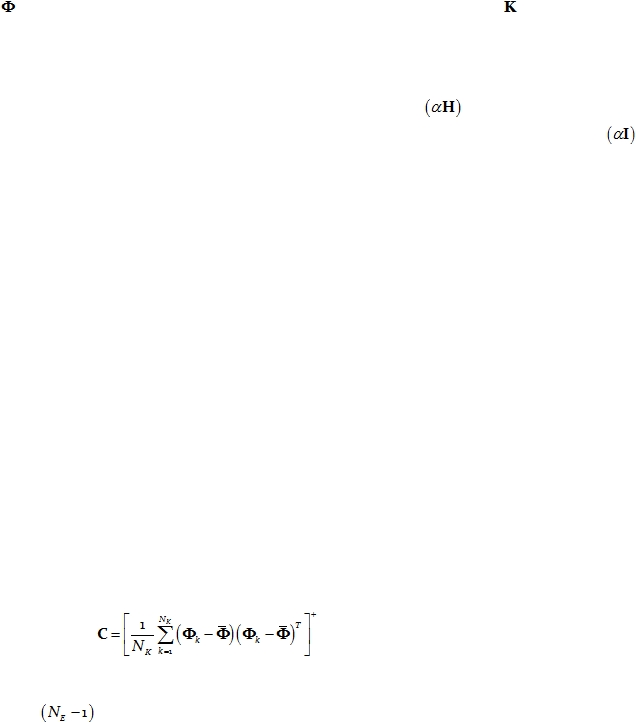
Cite as: “R.D. Pascual-Marqui: Discrete, 3D distributed, linear imaging methods of electric neuronal activity. Part 1: exact, zero
error localization. arXiv:0710.3341 [math-ph], 2007-October-17, http://arxiv.org/pdf/0710.3341 ”
Page 13 of 16
Given these provisions and modifications, the discrete 3D distributed linear solution
known as eLORETA is given by Eq. 36 and Eq. 37 with the weights defined by the solution
the problem in Eq. 42, obtained with the algorithm specified by Eq. 44 and Eq. 45.
7.5.
eLORETA for MEG with known current density vector orientation,
unknown amplitude
This case follows the same derivations as given above for the case “EEG with known
current density vector orientation, unknown amplitude”.
The forward MEG equation in this case has similar form to Eq. 46. For the MEG case,
would represent the magnetometer or gradiometer measurements,
would represent
the magnetic lead field, N would contain the outward normal vectors to the cortical surface
at each voxel (assumed known), and L contains exactly the same current density amplitudes
(common to both EEG and MEG).
As explained previously, the EEG regularization term
appearing in some of the
equations above (Eq. 52 to Eq. 58) must be changed to the MEG regularization term
,
where I is the identity matrix.
The existence of silent MEG sources might occur in practice, especially for quasi-
radial sources in quasi-spherical head geometry. Care should be taken to exclude these
possible silent sources
from the solution space, even if this implies that there are missing
cortical patches for the MEG solution space.
Given these provisions and modifications, the discrete 3D distributed linear solution
known as eLORETA is given by Eq. 51 and Eq. 52 with the weights defined by the solution to
the problem in Eq. 56, obtained with the algorithm specified by Eq. 58 and Eq. 59.
The general family of linear imaging methods is further extended to include data-
dependent (adaptive) quasi-linear imaging methods, also with the exact, zero error
localization property.
8.
A family of discrete, 3D distributed quasi-linear imaging methods
with exact, zero error localization: data-dependent (adaptive)
methods
Formally, this family of methods is identical to the one defined by Eq. 15, except that
now, instead of defining the parameter matrix C as a given, fixed matrix, it can, for example,
be taken as the inverse covariance matrix for the measurements, i.e:
Eq. 62:
where the subscript “k” may index time or any other form of repeated measurements for the
data. Note that in the case of MEG, C must be non-singular. In the case of EEG, C must be of
rank
, with its null eigenvector equal to a vector of ones (accounting for the